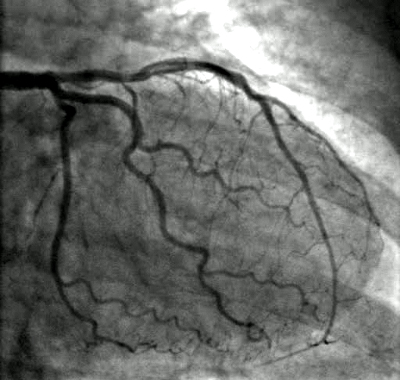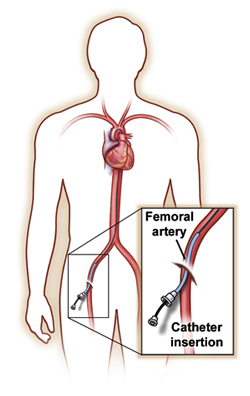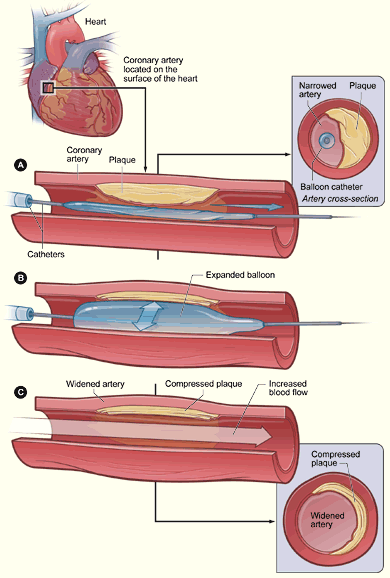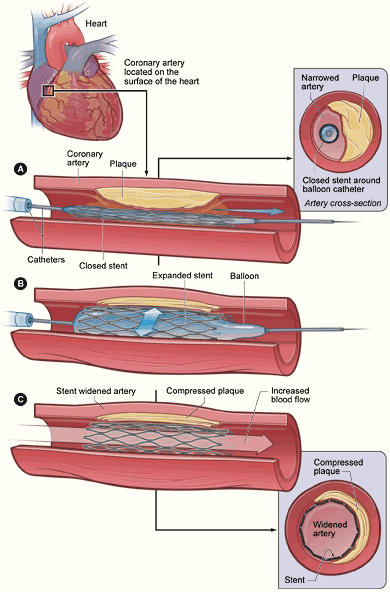Basic information about Angiogram and its utilities
This article gives basic information about angiogram and about how is an angiogram performed along with its utilities and applications.
Angiography
Angiography is a medical imaging procedure in which an X-ray picture is taken to visualize the blood flow of arteries or veins in the head, arms, legs, chest, back or belly and heart chambers. This procedure uses a special dye, called the Contrast Material or the Contrast Agent or Dye and the imaging is done using X-Ray based techniques such as "Fluoroscopy".Angiogram
An angiogram is commonly performed to treat any blockage or narrowing in a blood vessel that may cause interference in the normal blood flow. It is also used to treat blood clots. Common angiograms can look at the arteries near the heart (coronary angiogram), lungs (pulmonary angiogram), brain (cerebral angiogram), head and neck (carotid angiogram), legs or arms (peripheral), and the aorta (aortogram).
Pic 1. Coronary Angiogram
During an angiogram, a thin tube called a catheter is placed normally into a blood vessel in the femoral artery or just above the elbow (brachial artery or vein) through a small nick in the skin about the size of the tip of a pencil. The catheter is threaded to the study area under X-Ray guidance. Then the contrast agent is injected into the blood vessel to show the blood vessels clearly on the X-Ray.
Pic 2. Catheter insertion into Femoral Artery
The blockage or narrowing in the blood vessel or blockage caused due to blood clot are treated with techniques called Angioplasty and Thrombolysis.Angioplasty
In Angioplasty, a thin catheter attached with a very small balloon is inserted into the blood vessel. The catheter is threaded under X-ray guidance to the study area of the blocked artery. The balloon is inflated to open the artery at the site of narrowing. Other method is placement of a metal tube called a "Stent" at the narrowing site. A stent is a metal mesh that helps to keep the artery wide open.

Pictures explaining Angioplasty using balloon and stent (from left to right respectively)Thrombolysis
Thrombolysis is the treatment used if the blockage in an artery is caused due to a blood clot. Thrombolytic drugs that dissolve the clots are injected through a catheter to remove the clot and to restore the blood clot.
After the angiogram procedure, the patient is monitored for signs of bleeding. And also the patient is advised to be in bed rest for specified hours relative to the depth of treatment.





To track the thin blood vessels and capillaries the contrast agent is injected in the area and then a map of that is taken to find out any apparent blockage anywhere in the blood streams. Angiogram is definitely a great way to find the obstructed inner clearances of the blood tubes or artilleries so that remedial measures like placing a stunt or other surgical procedures could be thought of. Angiogram is a great test in this diagnostic matter.